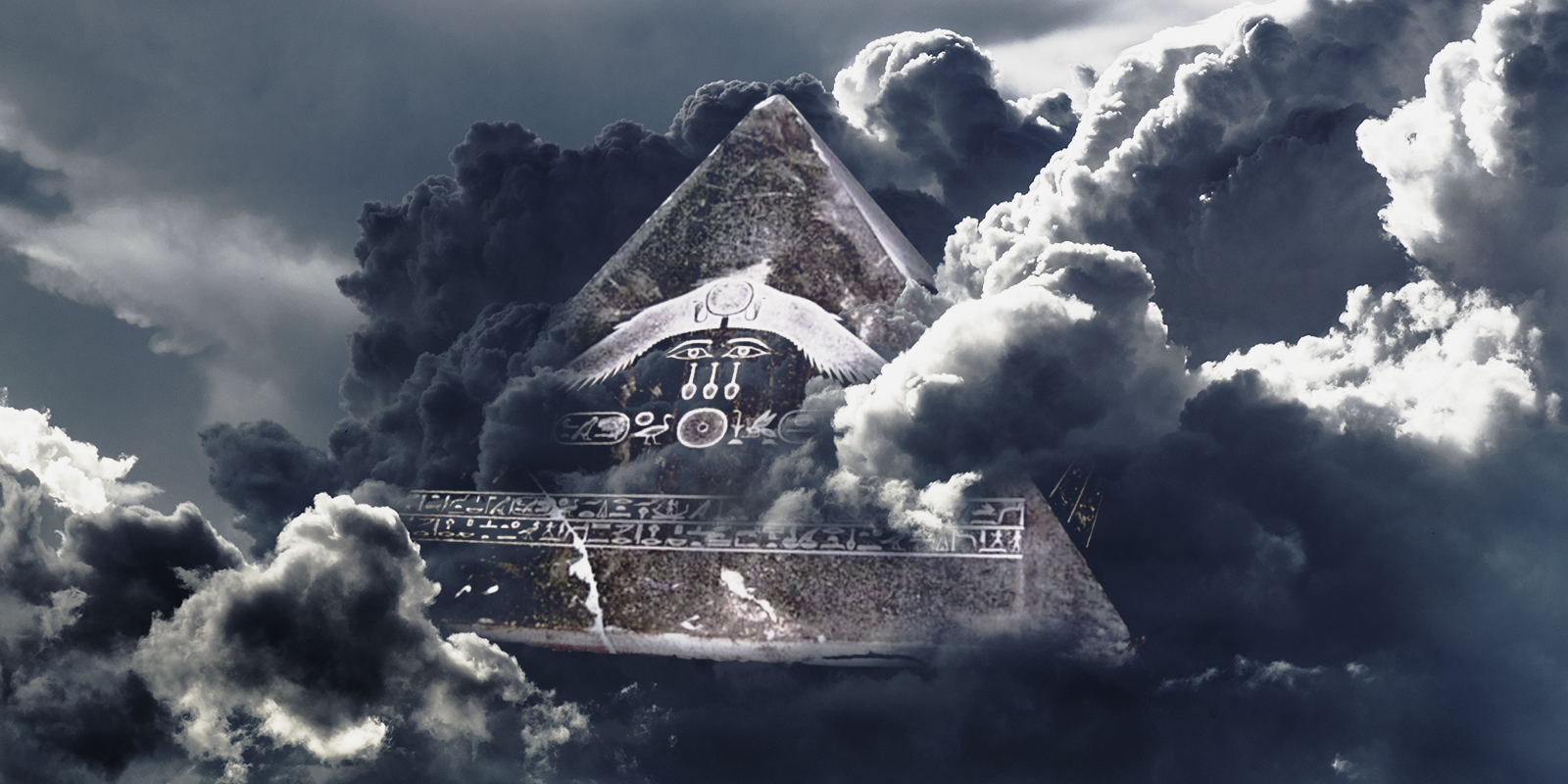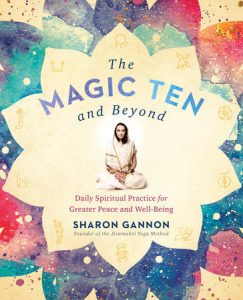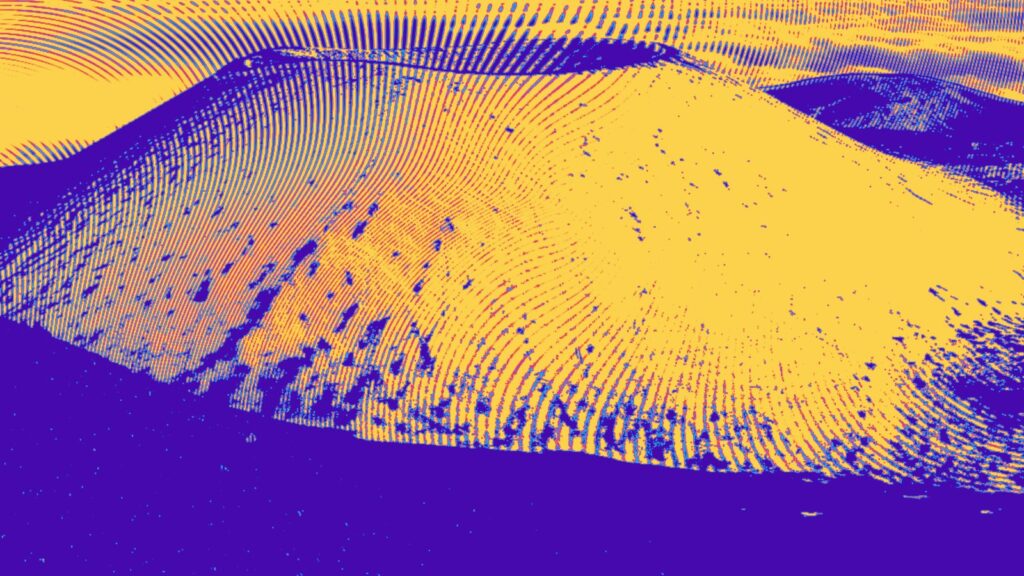The following essay is adapted from The Magic Ten and Beyond by Sharon Gannon, copyright (c) 2018, published by TarcherPerigee, a division of Penguin Random House, Inc.
“What are you doing, Sharon?” David says. “Shh!” I whisper, beckoning David to come closer and cover me as I place my right hand and left foot on the broken lower edge of the cold stone sarcophagus. David stares skeptically and shakes his head no as I climb, then slip silently into the granite coffer and lie down on my back. Feeling confined by the sides of the box, I automatically fold my arms pharaonic-style over my chest, close my eyes, still my body, and relax.
We are in Egypt, in the King’s Chamber of the Great Pyramid at Giza. There are only a couple of other tourists with us, and, surprisingly, no museum guards. So with David as my lookout, I’m determined to make the most of this rare privilege, not knowing how much time I have.
First there is the sound experience.
The humming, which seems to be coming from inside the stone itself, sounds like billions of bees industriously focused on some altruistic work. Across my eyelids flash images of Napoleon’s golden bees—interestingly, the symbol he chose for his empire after he returned to Paris from his expedition to Egypt, where, by his own accounts, he had a mystical experience while spending the night in the King’s Chamber of the Great Pyramid. Is there a connection? I wonder if he heard the bees, too. I consciously stop myself from going off on a Napoleonic tangent and return to the project of relaxing. As the images soften, I descend into a meditative place of deep listening. The humming becomes intense; my body seems to be floating in the box. I sense a space between my skin and the smoothness of the stone, and I realize that my body is not touching stone—it is touching sound. The molecules of my body are resonating with the molecules of the stone and the space in between. I feel comfortable and at ease. I get that familiar feeling of déjà vu and know that I have been here before. “Just let go a bit more,” I tell myself as I exhale. And then there is a surge of energy from my solar plexus, accompanied by the sensation of taking off. I feel as if my soul has wings and is lifting up, flying out of my body.
Suddenly my perspective changes and I feel myself suspended near the ceiling of the chamber. I look down and see someone lying in the coffer. I know that she has been there for some days, maybe a week, in a state close to hibernation; the beating of the heart has slowed, and with it the breath. Someone who didn’t know might think this person was dead, but I know that she is not dead. She is in retreat— undergoing some type of initiation. She is a student of an esoteric mystery school, lying in a meditative trance brought about through intense yogic practices over a long period of time. As I gaze at her, the middle of her torso begins to rise up, until only her hands and feet are touching the bottom of the coffer. Could she have been me, in another life?
Just then a flash of light closes the window to another time. A tourist has hovered over me and taken a picture of me in the sarcophagus. Then David helps me out and we sit on the stone floor of the King’s Chamber as I tell him about my out-of-body experience—the bees and the vision. Then, even though I am a bit shaken, we make our way out of the King’s Chamber by going back the way we came in, through what is known as the “thieves’ entrance”—a rough hole in the side of the pyramid made with a battering ram in AD 820. We hold on to the rope banisters that line the ramp— planks of wood that form the walkway into and out of the pyramid. At times we have to all but crawl through dark, narrow passages that seem to ethereally glow and pulsate. Eventually we do make it out into the bright sun and heat of the desert, feeling like we have been reborn.
The next day we are wandering amid sarcophagi, mummies, immense stone sculptures, cobwebs, layers of dust, and sleepy guards in the exhibition rooms of the Egyptian Museum in Cairo. I spot a section of an ancient temple wall painted with brightly colored figures and hieroglyphs. I walk closer to inspect an upside-down female figure who appears to be performing a yoga asana known in Sanskrit as urdhva dhanurasana—often referred to as wheel pose in English.
“Wow! She’s doing yoga!”
“David, I want to show you something really interesting,” I say, and I lead him back to the room where the “yoga” painting is. We are standing there looking at it and I say, “Do you think it’s possible that the roots of yoga could be found in ancient Egypt and not be the sole property of India, or at any rate had been available to both ancient cultures at the same time?”
“Sure, why not?” he says. “We too often take as fact what a few historians have said, but no one really knows the truth about the past—for the most part it is all speculation. But besides this painting of someone doing the wheel, do you have any other evidence that might support your theory?”
I have to admit that I only have an intuitive feeling—no provable facts. But still the idea holds me; the possible connection between yoga and Egypt has captivated me since I was young and became attracted to all things magical and mystical. Although I have never come across anyone who believed that yoga was practiced in ancient Egypt, or even considered the possibility, while reading about ancient Egypt I have often come across references to “ancient Egyptian mystery schools.” What might have been taught in those schools indeed remains a mystery, although many people have speculated on the possibilities. The Western hermetic tradition claims to have descended from the Egyptian mystery schools and cites the Egyptian god Thoth, also known as Hermes Trismegistus, as the source of the occult knowledge embraced by many modern secret societies, such as the Rosicrucian Fellowship and the Theosophists. Many great thinkers, scientists, and alchemists, including Pythagoras, Paracelsus, Sir Isaac Newton, and Ralph Waldo Emerson, acknowledged the occult wisdom of ancient Egypt.
Legend says that it was very difficult to be accepted into the ancient mystery schools. A prospective student would have to pass arduous initiation tests in places like the King’s Chamber of the Great Pyramid to prove he or she was qualified. Then what? What were students taught to practice in these schools after gaining entry? Once again, we have no concrete evidence—no old textbooks have yet to be unearthed at archaeological digs—but we do know that the ancients burned with the same quest to know the truth as we do today. To know who we really are, and what our purpose is here on Earth—these are universal questions shared by all spiritual traditions.
The Bible talks about Egyptian priests as wise men who were able to perform magic, make themselves invisible, and cast spells by uttering incantations or mantras. Many ancient yogic scriptures describe similar accomplishments as a result of yoga practices. The Indian scriptures provide the scholar with a wealth of knowledge, but to the adventurous practitioner they provide applicable methods, “technologies of ecstasy” in the phrase used by the scholar Alain Daniélou, to describe the transcendental experiential practices of yoga that go beyond intellectual speculation. But the point is, India wrote down its systems of yoga, and those writings still exist today, whereas no clearly written evidence of a yoga system has been unearthed in Egypt—at least not yet.
***
















